I don’t want this month’s Shout Outs to get lost in the holiday shuffle of office parties, vacation days, and last-minute lunch-hour shopping trips so I’m bringing it to you a week early. Consider it an early present from your favorite SHPO!

Another great preservation partnership!
We all love Fallingwater and understand why Frank Lloyd Wright’s masterpiece in SW PA is so important. But did you know that SE PA is also home to another great Modernist architectural treasure? This Shout Out is for this great place and for the partnership that is working to ensure its preservation.
The George Nakashima Woodworker Complex in New Hope, Bucks County is listed in the National Register and is recognized as a National Historic Landmark (and with a historic marker!) for its association with its namesake, who is credited as being one of the preeminent future designers in America in the mid-20th century as well as a gifted architect. George Nakashima (1905-1990) was born in Spokane, WA to Japanese immigrants and studied art, architecture, and design extensively at home and abroad. After working internationally for several years, Nakashima returned to the U.S. and spent several years in the Minidonka Relocation Center in Idaho during World War II, where he perfected his furniture-making and woodworking techniques in the Japanese tradition. His friend Antonin Raymond eventually secured Nakashima’s release, and he and his family moved to the Raymond’s farm in Bucks County, where Nakashima eventually established his own business.
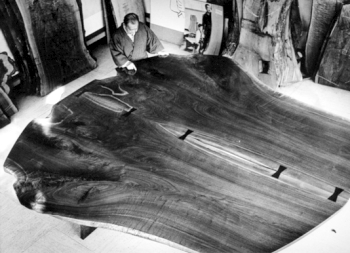
George Nakashima at work in 1986.
Nakashima’s Woodworker Complex was built in several stages beginning in 1946 through the 1970s. All built in the International Style with elements of traditional Japanese architecture and craftsmanship, the Complex includes 21 buildings on 12 acres ranging from his home to small manufacturing buildings to studios. Nakashima designed and oversaw the construction of each building, and used a single design ethic that combined wood, stone, stucco, and simple details through architecture, furniture, and landscape to enhance wood’s natural beauty. While we’re all familiar with the traditional Modernist masters, there isn’t much scholarship out there about the craftsman/architect, like Nakashima, from the same period.
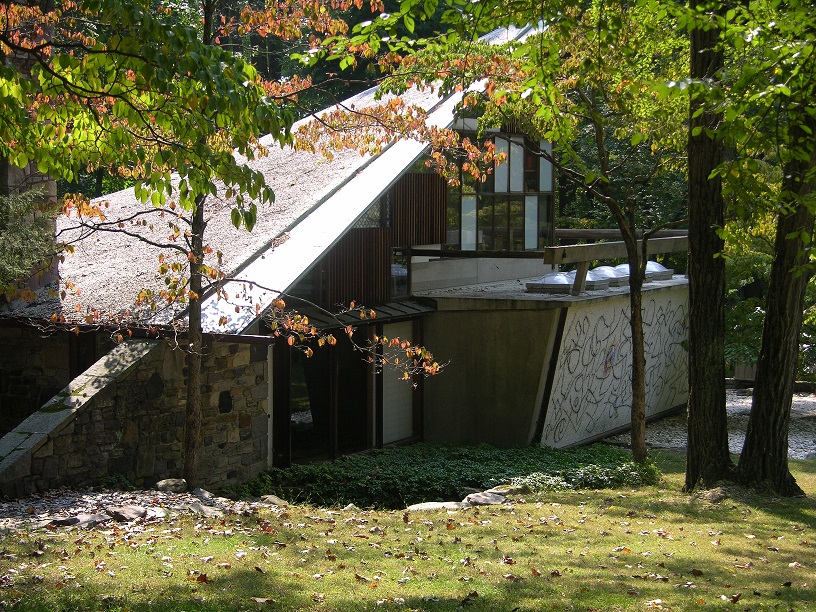
Arts Center
In 2013, the George Nakashima Woodworkers and PennDesign’s Architectural Conservation Laboratory (ACL) at the University of Pennsylvania began a partnership to document and study Nakashima’s Arts Building. The ACL gives Penn students the opportunity to work on real-world preservation and conservation problems and expands our collective knowledge about caring for historic buildings. With help from a grant from the Getty Foundation’s Keeping It Modern initiative, the group studying the Nakashima complex has created a conservation management plan for the property. The plan outlines the need to understand the history and significance of the complex, to place Nakashima and his craft traditions in the Modernist tradition, to develop policies to sustain and protect the property’s tangible and intangible resources, and to implement those policies.
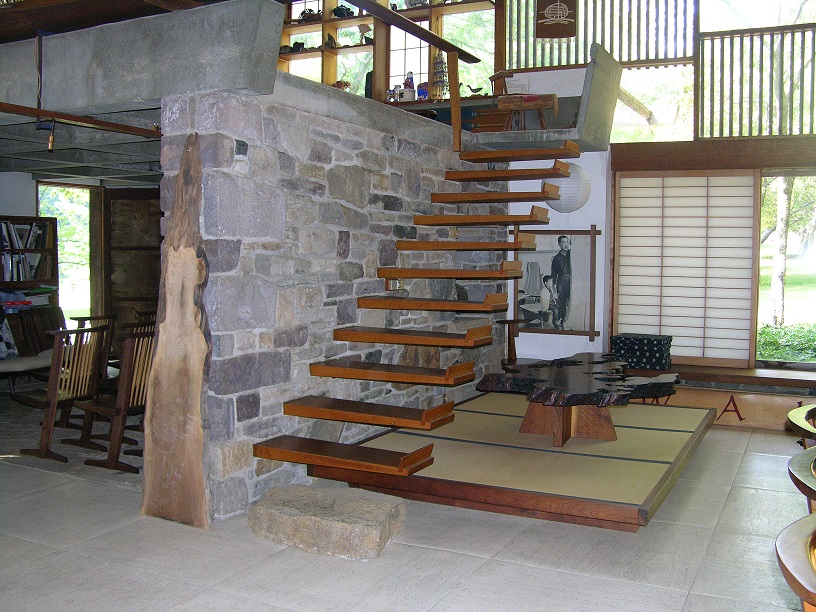
Interior of the Arts Building, 2008.
One of my favorite weekly reads…
One of the tools I use regularly in my role as Education & Outreach Coordinator is my search engine’s news alert function. I have it set to flag articles about the PA SHPO, historic preservation in PA, our staff, and a dozen more topics.
I routinely get articles from my “local history” and “Pennsylvania” alert from The News Eagle, a local NE PA paper based in the Borough of Hawley, Wayne County. They regularly publish a Local History column that does a great job of teaching their readers about Hawley-area history and historic places through a mix of historic photos, maps, and interesting tidbits. A few weeks ago they posted this story about one of the Borough’s many silk mills. They cover people, places, buildings, and traditions and, in doing so, connect today’s readers to their community’s history. They are also located in the Hawley Silk Mill, which was a pretty cool historic tax credit project a few years ago.
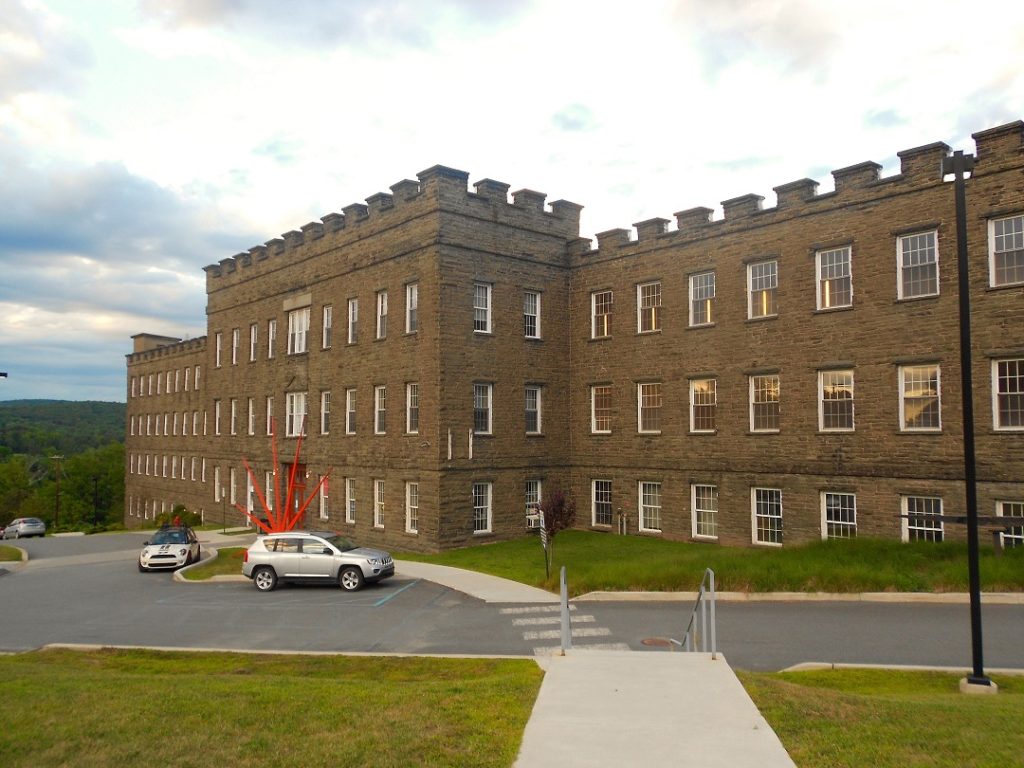
Hawley Silk Mill after rehabilitation into a mixed use commercial/retail destination.
One of the most consistent things we heard while travelling through Pennsylvania for the Statewide Plan Open Houses was that Pennsylvanians need to learn about their community’s history and understand the value, worth, and benefits of the older and historic places that tell that story. Please keep the local history coming, The News Eagle!
Even more contributions to NE PA local history….
Our Eastern PA National Register reviewer April Franz shared some news with me recently that I thought was SO worthy. In their December 2016 newsletter, the Wallenpaupack Historical Society give their own kind of shout out for the Paupack School (Key #111689) and its recent listing in the National Register of Historic Places. Local historians Bernadine Lennon and Jon Tandy prepared the nomination for this 1925 rural school building in Palmyra Township, Pike County. This Neoclassical Revival Style gem is listed under Criteria A and C, for its association with the early to mid-20th century patterns of education in rural Pike County and as a locally distinctive example of its type. The authors used the Historic Educational Resources of Pennsylvania Multiple Property Documentation Form to help evaluate and document the property and its significance as a rural school building in the Long Progressive Era (1837-1930) of commonwealth’s educational system.
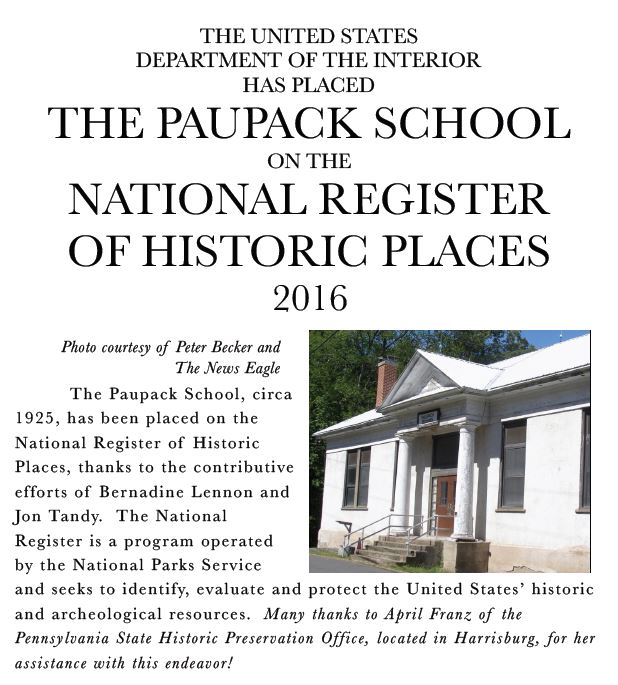
The Wallenpaupack Historical Society celebrates the good news.
Bernadine also authored the National Register nomination for the Patriotic Sons of America Washington Camp #422 (Key #144054) across the border in Dreher Township, Wayne County several years ago. Listed under Criterion A for Social History, this rectangular frame meeting hall was built in 1904 and had, for over 100 years, served as the ‘home base’ of community activity in that part of rural Wayne County. The PSOA occupied the building until 1946, a year before the fraternal organization dissolved, when the South Sterling United Methodist Women’s Society of Christian Services purchased the building and property to support their mission and the work of the nearby South Sterling United Methodist Church.
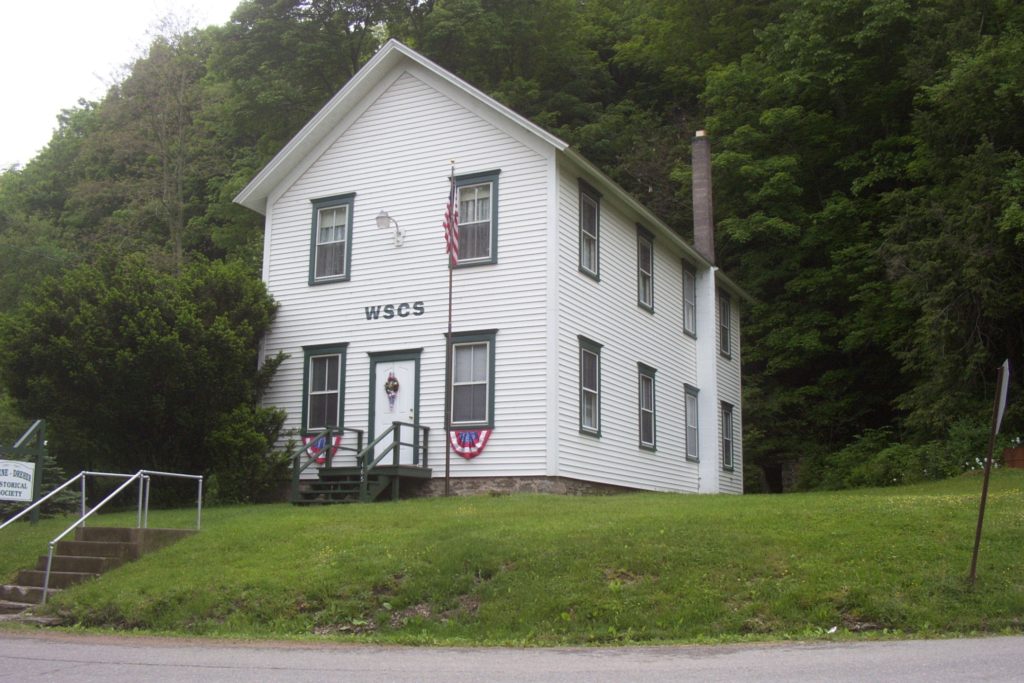
PSOA Washington Chapter #422 meeting hall.
We only have 16 properties listed in Wayne Co., and 24 in Pike Co., so her recent efforts—not motivated by anything other than appreciation for local history—are definitely making a difference!
That’s it for 2016, folks. Thanks for being dedicated readers and preservationists and I am looking forward to bringing you more Shout Outs in 2017!
Comment Policy
PHMC welcomes and encourages topic-related comments on this blog. PHMC reserves the right to remove comments that in PHMC’s discretion do not follow participation guidelines.
Commenters and Comments shall be related to the blog post topic and respectful of others who use this site.
Commenters and Comments shall not: use language that is offensive, inflammatory or provocative (this includes, but is not limited to, using profanity, obscene, or vulgar comments); disparage other commenters or people; condone illegal activity; identify the location of known or suspected archeological sites; post personal information in comments such as addresses, phone numbers, e-mail addresses or other contact details, which may relate to you or other individuals; impersonate or falsely claim to represent a person or an organization; make any commercial endorsement or promotion of any product, service or publication.
If you would like to comment on other topics not related to this blog post but related to PHMC, please fill out the PHMC Contact Us Form.

Leave a Reply